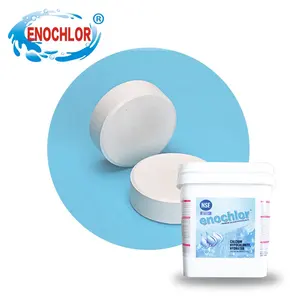
Japanese High Quality Chlorella Powder And Tablet Made In Japan For Health Foods And Dietary With GMP And Halal Certificates





















Calcium hypochlorite tablets, commonly referred to as cal hypo tablets, are a versatile and widely used chemical compound in various industries. These tablets are an essential product for water purification, disinfection, and sanitation processes.
Calcium hypochlorite tablets for drinking water are crucial in making water safe for consumption by eliminating harmful pathogens. In swimming pools, calcium hypochlorite tablets for pools ensure a clean and algae-free environment. Beyond this, these tablets are also employed in the agricultural sector as disinfectants and in various industrial processes.
The market offers a range of tablet sizes and formulations, including 1 inch calcium hypochlorite tablets and 3 inch calcium hypochlorite tablets, catering to different requirements. Accutab chlorine tablets and cch chlorinating tablets are specific types designed for ease of use and consistent dosing in their respective applications.
Cal hypo chlorine tablets are known for their stability and longevity, providing a sustained release of chlorine. This feature is particularly beneficial for long-term disinfection needs, such as in calcium hypochlorite tablets septic systems. The efficacy of these tablets in various pH ranges makes them a reliable choice for diverse water conditions.
Safety is paramount when handling calcium hypochlorite capsules and tablets. They must be stored in a cool, dry place away from organic materials to prevent any hazardous reactions. Proper handling ensures the safety of users and the effectiveness of the tablets in their application.
Selecting the appropriate type of chlorinating tablet, such as accu tab blue calcium hypochlorite tablets or cch calcium hypochlorite tablets, depends on the specific requirements of the task at hand. It is essential to consider factors such as the intended use, the volume of water to be treated, and the desired outcome when making a selection.